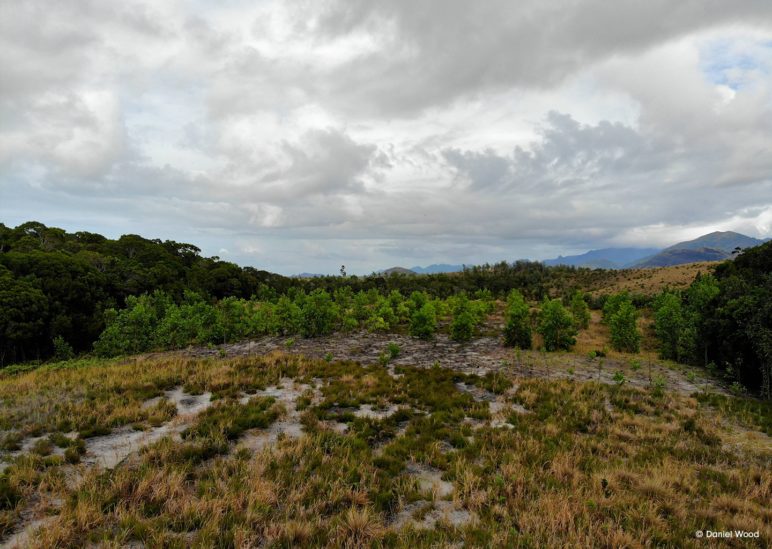Help put a forest back together–and save endangered lemurs!
Brilliantly colored chameleons, baobab trees that look like they could have been lifted from a surrealist painting, and playful, wide-eyed lemurs–the island of Madagascar has so many unique species that it’s often called the “eighth continent.” Because of its history and geography, roughly 90 percent of the plants and animals on Madagascar are found nowhere else in the world.
Beginning on Earth Day, April 22, 2022, you can help Seacology protect and restore a vitally important area of this unique island.
The Sainte Luce Littoral Forest is a stunning example of Madagascar’s famed biodiversity. The forest that stretches along the country’s southeastern coast is home to several species found nowhere else, even on Madagascar. These include critically endangered reptiles and amphibians, and four endangered lemur species.
Collared brown lemur
Tanosy mouse lemur
Thomas' dwarf lemur
Southern wooly lemur
On the brink
Unfortunately, like many of Madagascar’s ecosystems, the Sainte Luce forest and its wildlife face dire threats. Logging, mining, and other human activities have splintered the forest’s once-contiguous 2,825 acres into 17 fragments. Dividing a habitat also divides the plants and animals into separate groups, undermining their ability to migrate and reproduce, and increasing the risk of extinction.
Wildfires are another enormous danger to the forest, especially in the dry southeast. In the past few years, increasingly common and intense fires have raged across the island. With roughly 90 percent of its historic forest cover already lost, Madagascar’s remaining forests and all the life they support are at a make-or-break moment.
Fixing fragmented forests, fighting fires
We’re working with SEED Madagascar, a group of conservation experts who have been working on the island for more that 20 years, on a project to reconnect fragments of the Sainte Luce forest. Planting fast-growing acacia trees between isolated sections of forest gives animals a safe path to travel between them. The trees that form these wildlife corridors also create shade and improve soil conditions, fighting desertification and giving native plants a chance to reestablish themselves in degraded areas. There will be firebreaks around the new corridors, protecting the new growth from the risk of fire.
We have dedicated this project to the memory of influential biologist Edward O. Wilson, who served on Seacology’s Scientific Advisory Board until his passing late last year. Wilson’s pioneering research on island biodiversity showed that when habitats are fragmented, extinctions increase. His work provides a solid scientific underpinning for this project.

A win-win for local people
Seacology is committed to helping island communities protect the habitats that they rely on and are best-positioned to make a difference in. This kind of support is especially important in Madagascar, a country where many people live in poverty and must rely on scarce natural resources to survive.
The people of Sainte Luce and Ebakika Villages, near the Sainte Luce forest, are key to this project’s success. SEED Madagascar will train and equip members of the communities to prevent fires in and around the forest, and fight them when they occur. It will buy supplies from local merchants, and work with local landowners to build on the already strong community support for the project.
Please consider making a gift to support this urgently needed project today. In Madagascar, a little goes a long way, and every contribution will make a tangible difference in the future of the Sainte Luce Forest, the wildlife it supports, and the local people who depend on it.


